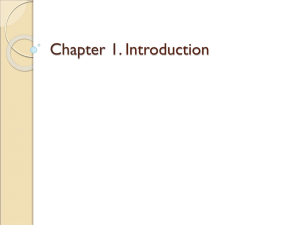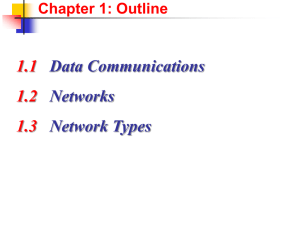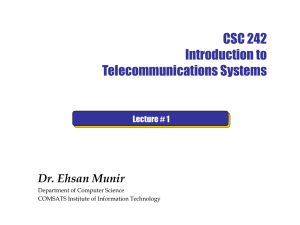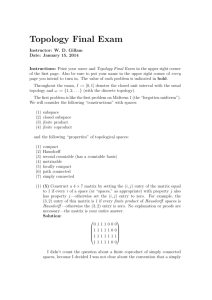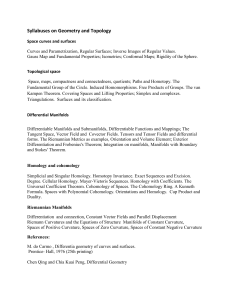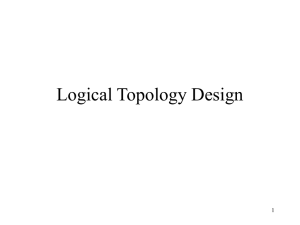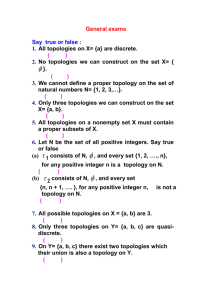MA4226.Lect1 - Department of Mathematics
advertisement
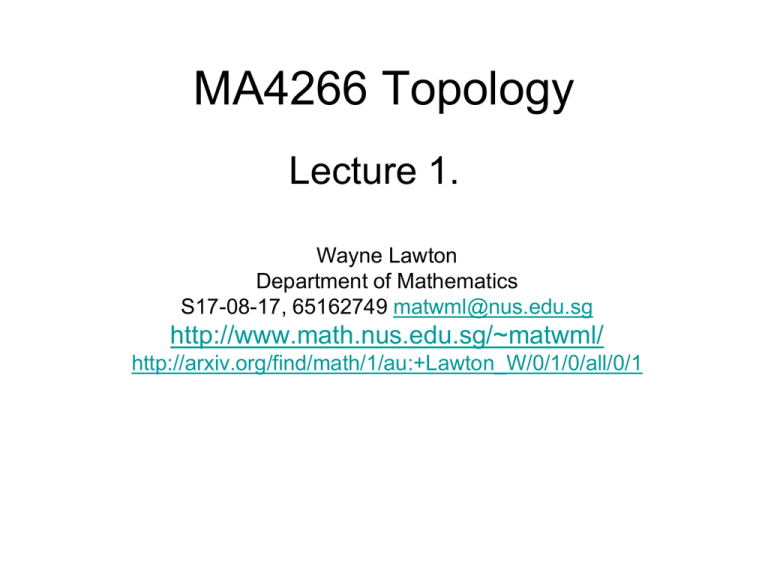
MA4266 Topology
Lecture 1.
Wayne Lawton
Department of Mathematics
S17-08-17, 65162749 matwml@nus.edu.sg
http://www.math.nus.edu.sg/~matwml/
http://arxiv.org/find/math/1/au:+Lawton_W/0/1/0/all/0/1
Administrative
MA4266 Module Title TOPOLOGY Semester 2, 2010/2011
Modular Credits 4 Faculty Science Department Mathematics
Teaching Staff ASSOC PROF Lawton, Wayne Michael matwml@nus.edu.sg
http://www.math.nus.edu.sg/~matwml/courses/ my personal website which contains mountains of materials
AIMS & OBJECTIVES The objective of this module is to give a thorough introduction to the topics of point-set topology with applications to analysis and
geometry. Major topics: topological spaces, continuous maps, bases, subbases, homeomorphisms, subspaces, sum and product topologies, quotient spaces
and identification maps, orbit spaces, separation axioms, compact spaces, Tychonoff's theorem, Heine-Borel theorem, compactness in metric space,
sequential compactness, connected and path-connected spaces, components, locally compact spaces, function spaces and the compact-open topology.
PREREQUISITES MA3209 Mathematical Analysis III
TEACHING MODES
Lectures, questions, discussions, tutorial problem solving and presentation by students and subsequent discussion encouraged by questions from the
lecturer, assigned readings covering most chapters from the textbook Principles of Topology by Fred Croom and supplementary materials taken from
Various sources, two tests and a final examination, written homework that is collected and graded and handed back to students.
SCHEDULE
Final Examination
LECTURE Class [SL1]
TUESDAY From 1600 hrs to 1800 hrs in S16-0430,
Week(s): EVERY WEEK.
FRIDAY From 1600 hrs to 1800 hrs in S16-0430,
Week(s): EVERY WEEK.
TUTORIAL Class [T01]
WEDNESDAY From 1100 hrs to 1200 hrs in S16-0433,
Week(s): EVERY WEEK.
SYNOPSIS described in the preface of the required textbook Principles of Topology by Fred Croom
PRACTICAL WORK none
ASSESSMENT
Test 1 20%
Test 2 20%
Homework/Tutorials 20%
Final Examination 40%
PRE-CLUSIONS MA3251, MA4215, FASS students from 2003-2006 cohort who major in Mathematics (for breadth requirement).
WORKLOADTop3-1-0-0-6
TEXT & READINGS Principles of Topology Author: Fred H. Croom, -Compulsory
Textbook
Principles of Topology by Fred H Croom,
Thompson, Singapore, 1989.
Available in the Science COOP Bookstore
at a significantly reduced student price
The use of this textbook is compulsory because
you are expected to read most of it and work out
solutions to selected problems located at the ends
of each of the 8 chapters.
Contents of Textbook
1.
2.
3.
4.
5.
6.
7.
8.
9.
Introduction
The Line and the Plane
Metric Spaces
Topological Spaces
Connectedness
Compactness
Product and Quotient Spaces
Separation Properties and Metrization
The Fundamental Group
My aim to is cover all of the material in the textbook
What is Topology ?
Greek
“position” or “location”
in the sense of properties that are
NOT destroyed by continuous transformations
bending, shrinking, stretching and twisting
BUT are destroyed by discontinuous transformations
cutting, tearing, and puncturing
Example 1.1.1
Shrinking in the vertical direction
( x, y) ( x, y / 2)
Non Morphable Example
Involution in a circle
z 1/ z
on
C \ {0}
( x, y) ( x / r, y / r ), r x y
2
2
Topological Equivalence
Between Geometric Objects
X
and
Y
means there exists is a continuous bijection
f : X Y
whose inverse
f
1
:Y X
is also continuous.
Which pairs below of geom. obj. are top. equiv.?
(0,1), R
[0,1), R
[0,1), (,1]
Who Needs Topology ?
Theorem 1.1: The Intermediate Value Theorem.
If
f : R R is continuous and there exists
a, b R such that f (a) 0 and f (b) 0
then there exists c R such that f (c) 0.
Corollary If P : R R is defined by a polynomial
having odd degree then P has a real root.
In what other areas, aside from calculus and
algebra, are existence theorems important?
Origins of Topology
In 1676 Leibnitz used the term “geometria situs”,
Latin for “geometry of position”, to designate what
he predicted to be the development of a new type
of geometry similar to modern day topology
http://en.wikipedia.org/wiki/Gottfried_Leibniz
Example 1.2.1 In 1736 Euler solved The Königsberg
bridges problem, this inventing graph theory
http://en.wikipedia.org/wiki/Seven_Bridges_of_K%C3%B6nigsberg
Psychologists hypothesize that the human brain
is topologically wired !
http://www.jstor.org/pss/748762
Assignment 1
Read Preface and pages 1-14 in Chapter 1
Do Problems 1-6 on pages 13-14 and prepare
to solve on the board in class for Friday


